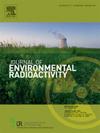Assessment of environmental impacts from authorized discharges of tritiated water from the Fukushima site to coastal and offshore regions
Abstract
In August 2023, the long-planned discharging of radioactive wastewater from the Fukushima Dai-ichi Nuclear Power Plant (FDNPP) started after the confirmation of its feasibility and safety. As this water contains elevated amounts of tritium even after being diluted, a lot of resources have been invested in the monitoring of the Fukushima coastal region where the discharge outlet is located. We compare the first 3H surface activity concentrations from these measurements (up to the end of November 2023) with the available background values to evaluate a possible impact of the long-term discharging on humans and environmental levels of the radionuclide of interest in the same or nearby area. From our results, we can conclude that the joint effect of horizontal and vertical mixing has been significant enough to reduce tritium concentrations at the monitored locations in the region close to the FDNPP port two days after the end of the respective phase of the discharging beyond the detection limit of the applied analytical methods (∼0.3 Bq L−1) which is by five orders of magnitude lower than safety limit for drinking water set by the World Health Organization (WHO). Moreover, the distant correlation analysis showed that tritium concentrations at stations located further than 1.4 km were very close to pre-discharge levels (∼0.4 Bq L−1). We also estimated that the 3H activity concentration in the offshore Fukushima region would be elevated by 0.01 Bq L−1 at maximum over a year of continuous discharging, which is in concordance with the already published modeling papers and much less than the impact of the FDNPP accident in 2011.

 求助内容:
求助内容: 应助结果提醒方式:
应助结果提醒方式:


